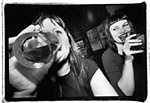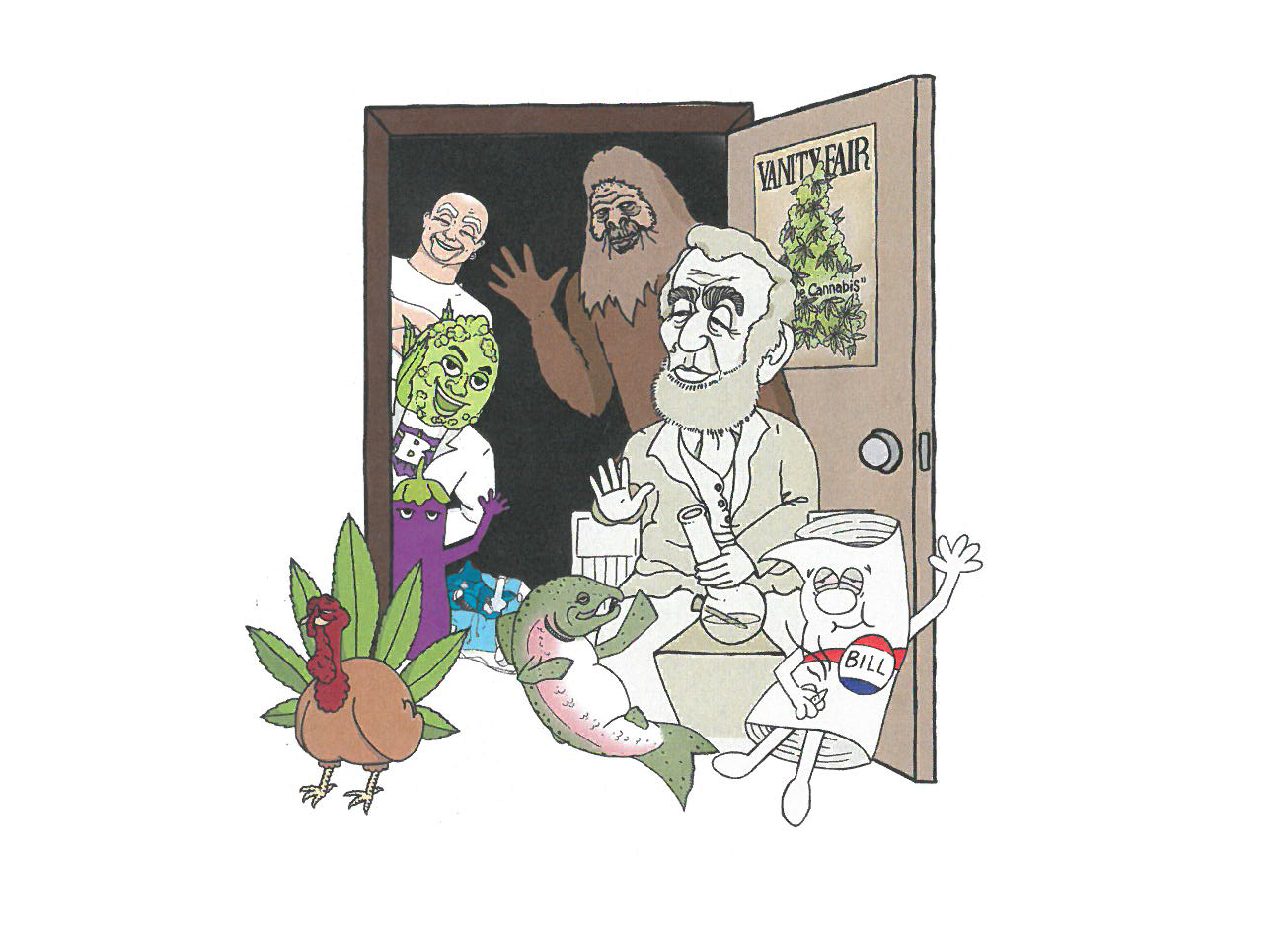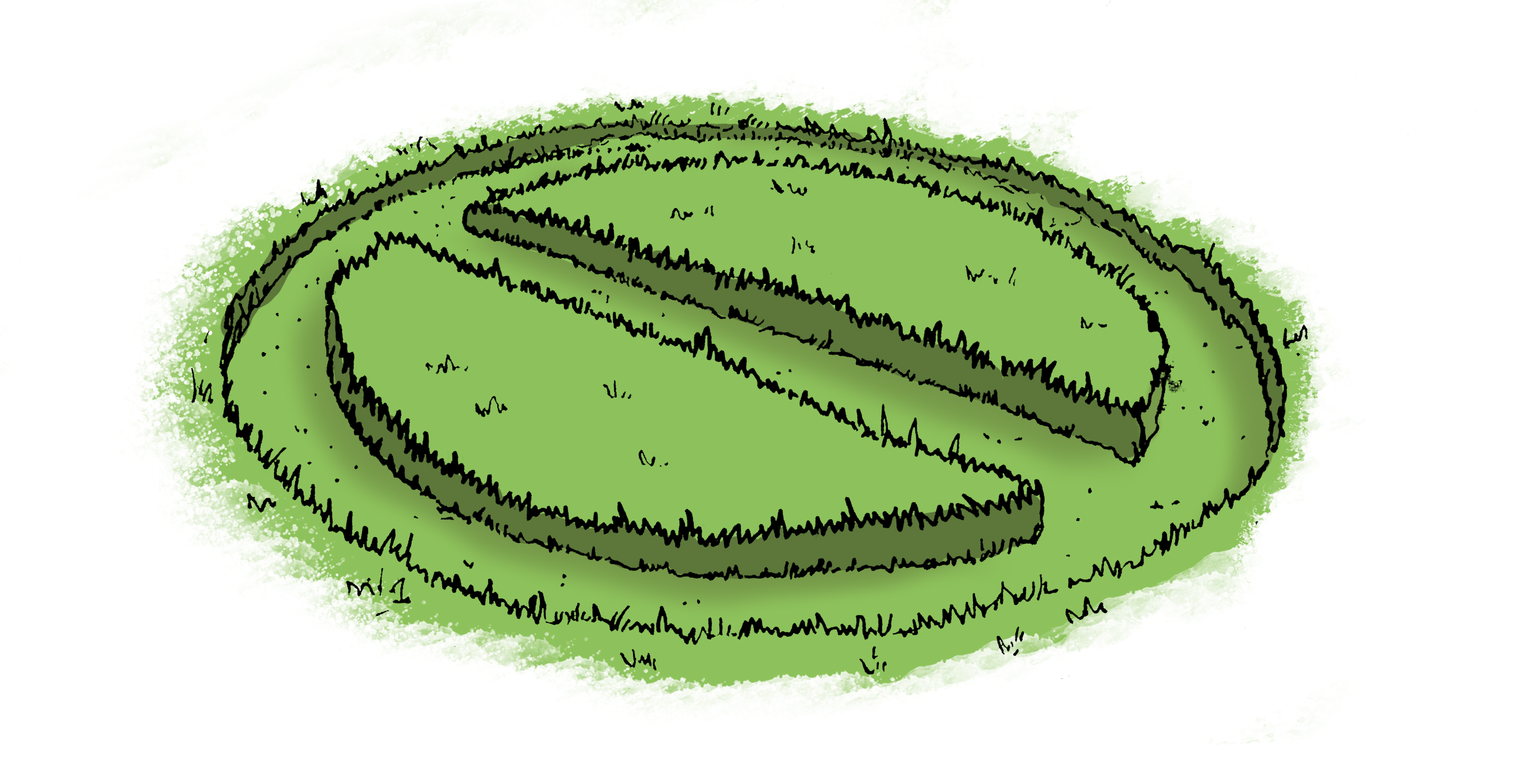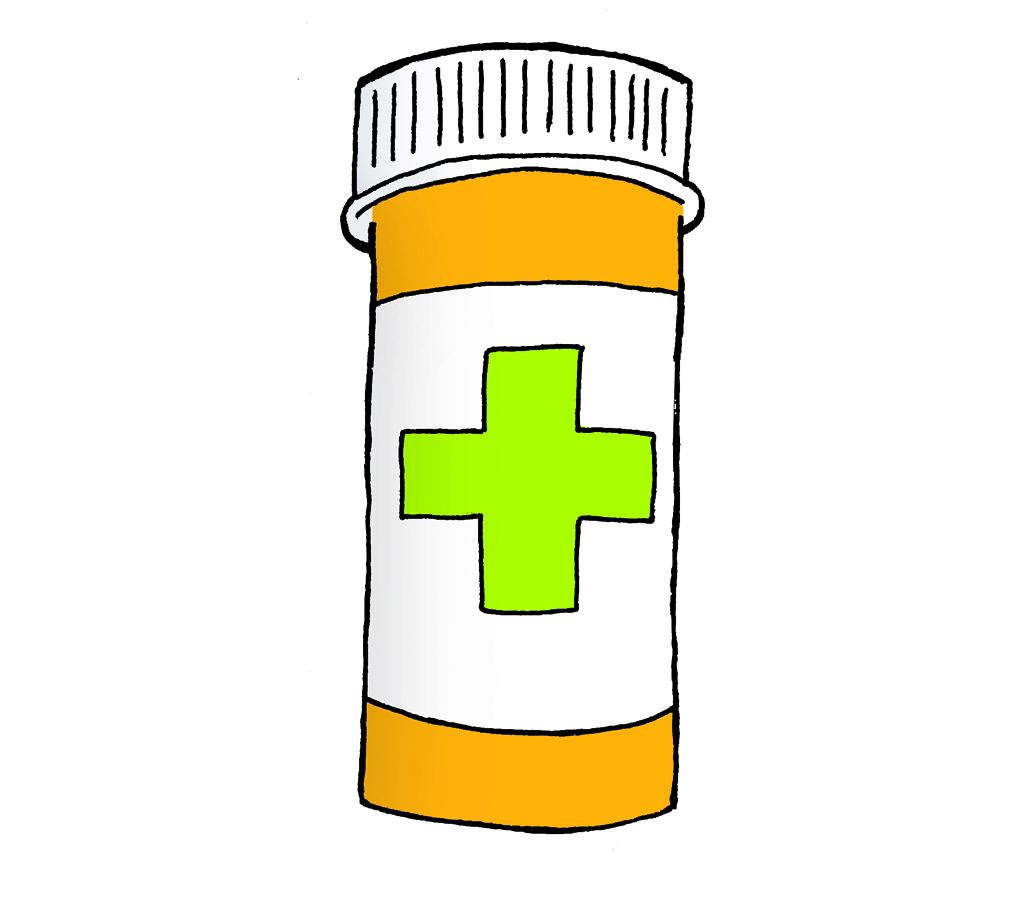Drunk. Smashed. Inebriated. Blotto. Looped. Sauced. Pissed. Lubricated. Hammered. Feeling no pain. We love it! And now, more than ever, hard alcohol is the way we’re getting there. Hell, it’s legal, which is more than we can say about the other great drugs floating around, and as daily life gets more stressful, it’s nice to put a real buzz on and slow the madness.
Everywhere on Earth, the search for new ways to go out on the town and frolic is never-ending. One millennium it’s cocoa powder and sacrifices, the next it’s bowling and brewskies. The Seattle scene has shifted just as wildly over the years. In the late ’50s, the home bar was all the rage—no happy homemaker could be truly happy without one. Then in the ’60s, people began venturing out for a bit of wine tasting (but you had to drive to San Francisco to buy the really good stuff). The fad in the late ’60s, of course, was LSD (though no one old enough to have done that then could give me any specifics now, either due to lack of memory or fear of being tested by current employers). The 1970s were a different kind of trip, with disco fever, club-hopping, and drunk driving taking main stage. Then, slowly but surely, the pub culture crept into our rainy zeitgeist; places like Murphy’s and the Unicorn (you could get Guinness on tap!) were where it was at. The hops didn’t stop there: For a long while we were the King of the Microbrews, and everyone you knew was wearing some cheap-ass baseball cap with the latest beer company’s logo on it, sucking down giant pints at yet another microbrewery (“Wow! They show ya the barrels and everything!”).
That was the ’80s—this isn’t. Aside from making you fat, bloated, and belchy, beer-drinking is pass鬠pedestrian, lowbrow, and finished. (Not to mention the fact that beer has less alcohol than does the sauce.) And while it’s true that beer gets consumed almost 10 times as much as wine and spirits combined (it’s those damn frogs, I tell ya), there’s a new, potentially statistics-shifting fact to add to the mix: A new generation is hip to the hard stuff. Us drinkers are now demanding something more than microbrews to ease our pain and start the evening (or morning) on a “high” note.
This is a more widespread and less overtly stylized phenomenon than the celebrated “cocktail culture” wave of the mid-1990s. That was a fad—this is a demographic shift.
Restaurants and nightclubs are leading the way by moving from stocking beer and wine only to keeping a full bar. (Hallelujah!) Linda’s finally put in the spirits, as has Cyclops, the Breakroom, Sit & Spin, even Bimbo’s Bitchin’ Burrito Kitchen.
Why are these joints switching to highballs? Cashola. The markup’s better on spirits, and tossing a liter of Stoli in the recycle bin is a helluva lot easier than hooking up a keg and priming the pump.
In terms of a business decision, adding hard licks is a no-brainer—that is, if you’ve got the space and are willing to learn how to make a Harvey Wallbanger. The annual cost for upgrading beyond beer and wine is made up after a few liquid transactions (it’s $400 per year to serve beer and wine, and roughly $1,500 for a license to serve spirits). Do the math: A bottle of middle-of-the-road vodka is $15 at the liquor store, $9 wholesale. Out of that, you can pour about 30 shots. Add two bucks for a tank of tonic water. At the going rate of $4.50 per drink, the bar’s makin’ 125 clams a bottle, which seems a mighty good return. Sure, there’s a bit of overhead—some glassware, rent, and staffing—but you get the point. Spirituous liquor = $$$.
LOVE WHAT YOU’VE DONE TO THE PLACE
Four hundred people are jammed into The Drink every Thursday night, with another 50 or so waiting outside. Four hundred! That’s more than the Sonics will get in the Key after Gary Payton demands to be traded. The Drink used to be Rory’s on Eastlake. Bad lighting, a low ceiling, and a pre-fab pub environment put that dump on its last legs, ready for bankruptcy and a garage sale. Jeff Howard, a hip young chain-smoking stand-up comedian and ex-employee, saw the opportunity 14 months ago to buy the place lock, stock, and beer barrel for about 30 grand. In a few short months, he’d turned it into one of the most popular watering holes in town. And what did he do to “spruce the place up”? Got a license for hard liquor, put tinfoil on the walls, and called it “The Drink.” And “drink” it is—drunk last night, drunk the night before, gonna get drunk-like-we’ve-never-been-drunk-before drunk. There’s also a dance floor. As Howard subtly puts it, “Chicks love to dance.” And where there are “chicks,” roosters will flock.
Another factor in the move toward the hard stuff is the Washington State Liquor Control Board. For some reason, this anonymous group of dictatorial lawmakers has lifted some of their draconian standards in regard to who can have a liquor license. In previous years, a restaurant had to have at least 70 percent of its business in food sales to receive a liquor license (and a wad of cash ready for the WSLCB goons). Lately, they’ve been doling out licenses faster than bad condos are going up in Belltown. Each year, more and more restaurants add hard liquor. Today the food/booze ratio is out the window and an establishment needs only serve five entr饳 five hours a day to qualify for a license.
This isn’t to say Washington State is liberal when it comes to liquor laws; we’ve still got a bunch of unenlightened control freaks like Mark Sidran, Governor Milquetoast, and Senator Skeletor at the civic helm. In fact, when it comes to boozing laws, Washington might as well be Mormon; we still don’t get it. In Oregon, you can head to Paul Allen’s Rose Garden and have a gin and tonic delivered to your seat. In Nevada you can legally get a cocktail—and anything else—24 hours a day. In California you can throw a fifth in with your groceries, and in Texas you can order a Jack Daniels on the rocks in a to-go cup and hit the roadkill running. Consider these maverick states the elder teats we may one day become. But for now, be happy just to get a hard drink in a bar.
“I.D., PLEASE”
Newly legal drinkers today were born in 1978. The rest of us hardened drinkers try to hearken back to those first days of binge drinking, all-nighters, praying to the porcelain god, and skull-caving headaches. Ah, what sweet memories. . . .
Part of the fun of drinking hard alcohol is learning what different types of spirits taste like; and different inebriates also give you a different buzz (rum vs. tequila is like the tortoise vs. the hare). Unfortunately for me, my initiation to booze was just that—a one-night hazing horror show from hell, where my soon-to-be frat brothers taught us pledges about bartending by pouring one of every kind of drink in the book until we hurled, passed out, or—in my case—walked off into the night, waking up under a tree five miles from campus. Lesson learned: Don’t join a fraternity. Secondary lessons: a) the phrase “I’ll never drink again” is a lie; b) mixing will kill ya; c) “It’s an acquired taste” is actually doublespeak for “It’s gnarly but will get you wasted.” Over time, and considering the other options, you get used to the taste.
Most of us have a pretty good “first buzz” story, having something to do with bad mixology (i.e., rum, grape juice, and schnapps), too much of a good thing (an entire bottle of Crown Royal), followed by the inevitable spinning hurl at the end of the test run (hopefully you were able to make it out the door or to the toilet pre-yak). After getting past these first-time jitters (and the dry heaves), we learn to appreciate the finer subtleties of booze, gradually working our way up the ladder from Jack Daniel’s to Maker’s Mark to Knob Creek, to unemployment or AA, and then back to the Maker’s. There’s also the customization factor of being able to order your own style of mixed drink: “I’ll have a double Patron margarita on the rocks, salt on the rim with a splash of Cointreau and a lime, please.” It’s the same thrill as ordering a half-caff-low-fat-triple mocha, but you get to add gin, rum, or both!
Drinking certain types of alcohol is a symbol in itself: Bourbon’s for Democrats, Scotch is for Republicans, wine is for ladies, Jameson is for Catholics, Bushmill’s for Protestants (or is it the other way around?), gin is for stockbrokers, tequila is for dancing with a lampshade on your head, wine coolers are for losers, peach schnapps is for getting girls drunk, Manischewitz is for Jews who can’t afford really good kosher wine, and Wild Turkey’s for, well, wild turkeys.
THE COCKTAIL CULTURE
According to John Hawkley of recently resurrected Cyclops fame, part of the reason a new set is moving toward cocktails is for the sophistication of it all. “Some of the so-called ‘cocktail crowd’ is doing it for the style,” he says. “Instead of grabbing onto a big stein of beer, they want a piece of the martini glass, of that Frank Sinatra fashion. It’s the elegance of what comes with a cocktail—the social grace and the moneyed look.” Taking one look at his hopping new bar, you know the money’s flowing fairly freely in the Big Town; night after night the city is overflowing with beautiful hipsters, practicing their “Shaken, not stirred,” and sucking down Manhattans, Moscow Mules, and the latest craze, Mojitos (a fabulously refreshing concoction of fresh mint, sugar, lime, rum, and ice, mashed in a shaker, then poured into a glass with a splash of soda water).
The concept of booze as a status symbol didn’t start with the Rat Pack, but once Sinatra and the boys got hold of them, martinis have never quite looked the same. Tini Bigs, a Seattle martini lounge, has a painting of Frank and Dino on the wall, cigars for sale, and a deco feel that invites customers to, well, lounge, baby! The owner, Keith Robbins, understands that people are looking for a place to chill. “The thing about a successful cocktail lounge is that it’s got to be comfortable for conversing. Going out is an event—people are making a night of it—and we want to provide a comfortable setting to hang.” As for a new group of Rat Packers? “The Vegas cocktail culture of the ’50s can’t really exist in the ’90s—nobody’s doing the three-martini lunch anymore. They’d lose their lives, their driver’s licenses, their jobs, and their lunch. What’s still in style, though, is a good bar. People have learned to appreciate a better cocktail—preparation, presentation, and quality liquor.”
Understand that the “cocktail culture” in its purest form is more than folks in Gore-Tex parkas swilling down giant martinis and smoking cancer sticks; according to Russell Scheidelman, editor of Organs and Bongos, A Periodic Guide to Today’s Cocktail Culture, the phenomenon includes cocktails, lounge music (Dino, Sammy, et al), and retro fashion that together create a scene. The music, apparently, is essential—when I told Scheidelman that I’ve been known to throw a cocktail party on occasion, his first question was, “What kind of music do you play?” Upon hearing names like Van Morrison, REM, and Kula Shaker, I could sense him smirking on the other end of the line. “That’s interesting, because, really, it’s hard to have a true cocktail party with rock and roll,” he gently admonished. “The music’s got to be intimate and textual. If it’s too loud, like rock, or even be-bop, it’s overpowering and eliminates the real lounge vibe. It’s nice if people can interact, and the music must facilitate that.”
I’ve always hated Sinatra—Ol’ Blue Eyes was a Mafia thug with some really bad politics—and jazz bores me to tears. So I asked Scheidelman for some other suggestions that might move my lounge act into the big time. “Oh, bossa nova. Tito Puente and Afro-Cuban music. Even some music from James Bond called ‘crime jazz.’ Anything that’s sensual and offers different textures for the palette.” Pretty deep stuff for a lounge lizard.
For those looking to go out and find the Seattle “cocktail culture” in its three-part entirety, you’re outta luck; the gig probably peaked in 1995 or thereabouts. Here in town, Moe’s was the happening spot (now the cafeteria-like ARO.Space), and the movie Swingers was inspiring young people to buy bowling shirts and mingle wildly. The nation was dancing to the swing music of Cherry Poppin’ Daddies, Squirrel Nut Zippers, and Big Bad Voodoo Daddy, and clubs like the Backdoor Lounge and Aristocrat’s had special nights where cool cats dressed to the vintage nines, drank swinging concoctions, and grooved in loungy unison to martini music (a.k.a. “easy listening”).
In part because this well-dressed crowd (mostly women) looked so fine, the cocktail crowd began attracting a not-so-mellow Frat Pack, looking for a meat market and forcing the cocktail culture to move underground. While there are still a few authentic lounge nites taking place (Monday nights at the Fenix with swing queen Leslie $, for example, Swing Sundays at the Showbox, or anywhere Terrance Gun is spinning discs), for the most part that scene has vanished like an olive in a martini glass.
“When the guys in baseball caps showed up, we moved on. Private parties are where it’s at in terms of the current cocktail culture,” says Scheidelman. “People are putting on theme parties where folks dress up, we play live jazz or swing music, and have a great time. I’ve created the Blue Flamingo Lounge in my apartment—got the velvet paintings, the mood lighting, the swizzle sticks—and I’m ready to go.”
Regardless of whether you’re doing it in a smoking jacket at home or at the Cha Cha in a sharkskin suit, whether you sniff, swill, snort, shoot, or slam the stuff, and whether you groove to AC/DC, rockabilly, videos at Manray, or elevator music, the real reason you seek out the drink in the first place is that booze is a relaxant. Alcohol makes us loosen up in a world that’s less and less conducive to doing so: There’s too much work to be done, too little money, too low of a DUI level, too much conservative mojo.
A MARTINI A DAY HELPS KEEP THE DOCTOR AWAY
It’s a proven medical fact that not only is red wine good for you, but also spirits—Scotch, bourbon, and bathtub gin. In addition to helping prevent heart disease, a few belts a day can reduce worry and aid in sleep (honest! Just check out T. Turner, MBAA Technical Quarterly, 1990). According to Gene Ford, a tireless advocate of alcohol’s benefits, distilled liquor has been used for medicinal purposes for over 10,000 years—and thus has a more proven track record than Viagra, Prozac, or a shrink’s couch. “Every living animal seeks intoxication,” states Ford. “We all know about birds and booze. But tigers, snakes, ants, even elephants find liquor in nature. It makes sense. We wake up in the morning knowing we’ve got a tough day ahead, and we seek release.”
In Ford’s upcoming book, Alcohol: Nature’s Most Versatile Health Food, the former liquor distributor pushes for moderation in drinking, but also for the recognition that alcohol deserves as a fitness food. “Spirits have no fats, there are no sugar problems—which is why it can help diabetics—and it gives us energy. It’s life-giving. There’s nothing wrong with some good old-fashioned cocktailing.” He oughta know—at 71, with an agent, newsletter, and relaxed lifestyle, he’s just starting to get rolling.
Of course, not everybody wants a hard-drinkin’ crowd in their living room. The Drink’s owner Howard says his friends next door at Bandoleone don’t really want his customers to slosh on over to their place—this cocktail-drinking mob is drunk and, more often than not, a bit boisterous, to put it politely. The lounge folks may seek mellowness from their martinis, but often times the hooch will make you rowdy and rambunctious.
UGLY DRUNKS (A DISCLAIMER TO KEEP MADD OFF MY BACK)
There’s no question there are some not-so-pleasant side effects to heavy drinking (and I’m not talkin’ about beer goggles). With drunkenness, for example, comes loudness. It goes with the social interaction and the pink flush, the chronic red nose and the tragic road deaths. There is often a price to pay, sometimes worse than a hangover or delirium tremens. Some folks are addicted to the liquid diet, while others are simply looking for an excuse to be lecherous and exhibit their aggressive tendencies. Regardless, alcohol is considered a drug by the Feds, and authorities are trying to control it (that’s the reason they call ’em the Washington State Liquor Control Board). It may not give ya cancer, but, over time, it will gnaw at your liver like termites at Al Gore.
Plenty of folks are preachin’ the gospel that alcohol is the devil’s water: Mormons, Mothers Against Drunk Driving, Nancy Reagan, Higher Education Center for Alcohol Prevention, the Coalition of Liver Lovers, and, most recently, the presidents of 113 state universities and colleges who in September launched an ad campaign calling attention to excessive drinking by students. (According to a recent Harvard study, 43 percent of college students are binge drinkers—defined as men who downed at least five consecutive drinks and women who consumed four or more drinks. Of course, that beverage number would be higher and the overall percentage lower if it had been done by a less wimpy college). The $600,000 alcohol abuse campaign is clever and markedly sarcastic, but just a drop in the sea of beer commercials, sexy rum ads, James Bond movies, and neon martini glasses displayed in the windows of neighborhood bars near you. It’s a shame their “falling off balconies” message won’t reach their rioting, bingeing audience; if it did, there’d be a lot more to go around for the rest of us.
Ultimately, until the powers that be legalize drugs or someone comes up with a safer, more road-worthy alternative, alcohol will always be the most readily available and attractive fallback position. (Besides, carrying a bong in your car is risky, joint rolling time-consuming, Ecstasy expensive, and heroin deadly.) Which brings us back to the remedies that are obtainable—nicotine, cough syrup, 222s, glue, caffeine, nitrous, wine, beer, firewater. And only one of these gets served in an elegant glass, in a social setting full of gorgeous people, from a bartender/shrink/friend/ storyteller.
LAST CALL
In the end, there’s a group of hard-core drinkers who really don’t give a fuck about trends, cocktail culture, their health, liquor licenses, the 21st Amendment, or the suave image of a martini. Leather-lunged tough guys and gals with callused asses from sitting on bar stools too long—this group of marinated lushes has been drinking the hard stuff all along at places like Lowell’s, Charlie’s, Gibson’s, Ernie’s, and the Frontier Room. If it were Prohibition, these are the folks who’d have the stills and speakeasies in their basements, cranking out moonshine for the rest of us, and we’d consider them saviors. Nothing’s ever changed with these party animals; the bar just got more crowded with hipsters, the wait for service a little longer, and the drinks more expensive. Next time you see one of these old-timers, buy ’em a round—that may be you some day.
Ready for a drink? Check out our guide to the best booze mills in the city.








